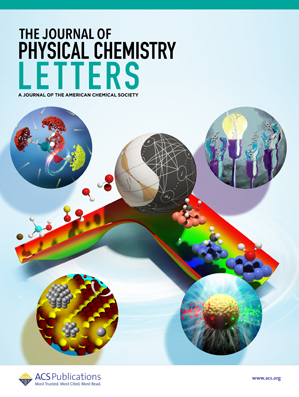机器学习加速抗菌无机纳米材料的发现
IF 4.8
2区 化学
Q2 CHEMISTRY, PHYSICAL
引用次数: 0
摘要
随着传染病的日益流行和细菌耐药性威胁的增加,抗菌无机纳米材料引起了人们的广泛关注。然而,这些材料的多样性、丰富性和复杂的机制给寻找既高效又具有广谱活性的新型药物带来了重大挑战。因此,本研究首次应用机器学习来发现抗菌无机纳米材料。从8000多篇论文中提取了2000多种抗菌纳米材料的信息。通过无监督机器学习分析来评估数据分布,并探索高维空间中材料特征与抗菌活性之间的关系。我们训练了一系列的机器学习模型。通过对六个绩效指标的评估,从27个维度确定了五个关键特征。为了进一步量化结构-活性关系,采用遗传规划-符号分类模型生成了精确的数学公式,预测精度为0.83。利用该公式对43种新型抗菌无机纳米材料进行了预测。其中,合成了四种纳米材料,并对其抗菌性能进行了实验验证。这项工作不仅为设计抗菌无机纳米材料提供了新方法,而且为机器学习在材料科学中的应用开辟了新的途径。本文章由计算机程序翻译,如有差异,请以英文原文为准。

Machine Learning Accelerated Discovery of Antimicrobial Inorganic Nanomaterials
The growing prevalence of infectious diseases and the increasing threat of bacterial resistance have drawn widespread attention to antimicrobial inorganic nanomaterials. However, the diversity, abundance, and complex mechanisms of these materials present significant challenges in identifying new agents that are both efficient and cost-effective with broad-spectrum activity. In response, this study applied machine learning for the first time to discover antimicrobial inorganic nanomaterials. Information on over 2,000 antimicrobial nanomaterials was extracted from more than 8,000 papers. An unsupervised machine learning analysis was conducted to assess data distribution and explore the relationships between material features and antimicrobial activity in high-dimensional space. A series of machine learning models were trained. Through the evaluation of six performance metrics, five key features were identified from 27 dimensions. To further quantify the structure–activity relationships, a genetic programming-symbolic classification model was employed to generate a precise mathematical formula with a prediction accuracy of 0.83. Using this formula, 43 new antimicrobial inorganic nanomaterials were predicted. Of these, four nanomaterials were synthesized and their antibacterial properties were experimentally validated. This work not only provides a next generation approach for designing antimicrobial inorganic nanomaterials but also opens new avenues for applying machine learning in materials science.
求助全文
通过发布文献求助,成功后即可免费获取论文全文。
去求助
来源期刊

The Journal of Physical Chemistry Letters
CHEMISTRY, PHYSICAL-NANOSCIENCE & NANOTECHNOLOGY
CiteScore
9.60
自引率
7.00%
发文量
1519
审稿时长
1.6 months
期刊介绍:
The Journal of Physical Chemistry (JPC) Letters is devoted to reporting new and original experimental and theoretical basic research of interest to physical chemists, biophysical chemists, chemical physicists, physicists, material scientists, and engineers. An important criterion for acceptance is that the paper reports a significant scientific advance and/or physical insight such that rapid publication is essential. Two issues of JPC Letters are published each month.
 求助内容:
求助内容: 应助结果提醒方式:
应助结果提醒方式:


